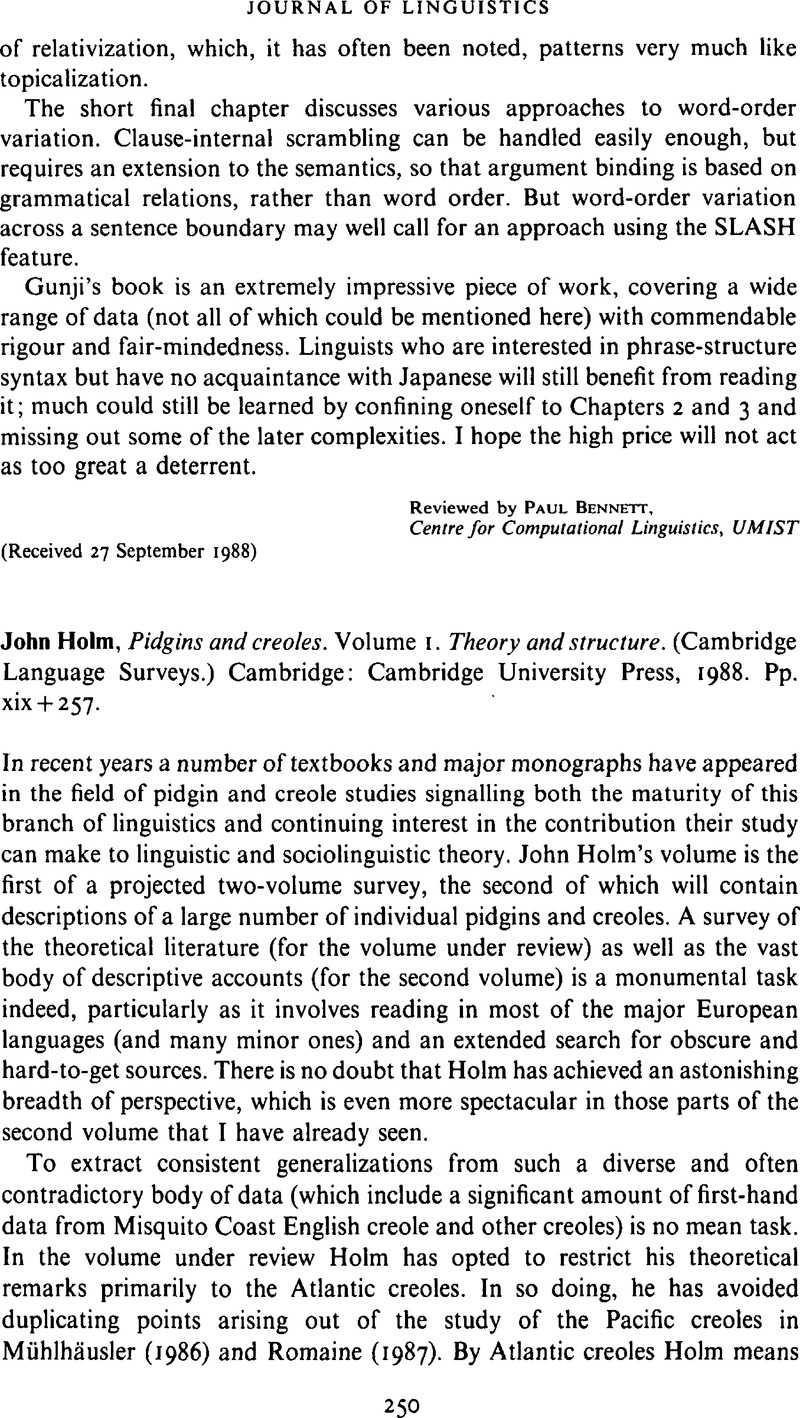No CrossRef data available.
Article contents
John Holm, Pidgins and creoles. Volume 1. Theory and structure. (Cambridge Language Surveys.) Cambridge: Cambridge University Press, 1988. Pp. xix + 257.
Published online by Cambridge University Press: 28 November 2008
Abstract
An abstract is not available for this content so a preview has been provided. Please use the Get access link above for information on how to access this content.

- Type
- Reviews
- Information
- Copyright
- Copyright © Cambridge University Press 1989
References
REFERENCES
Akers, G. A. (1981). Phonological variation in the Jamaican continuum. Ann Arbor: Karoma.Google Scholar
Donicie, A. & Voorhoeve, J. (n.d.). De Saramakaanse Woordenschat. Universiteit van Amsterdam: Bureau voor Taalorderzoek in Suriname.Google Scholar
Dutton, T. E. (1983). Hiri Motu-Jena Sivarai. Port Moresby: University of Papua New Guinea.Google Scholar
Johnson, M. C. (1974). Two morpheme structure rules in an English Proto-Creole. In DeCamp, D. & Hancock, I. F. (eds). Pidgins and creoles. Washington: Georgetown U.P. 118–129.Google Scholar
Mülhlhäusler, P. (1981). The development of the category of number in Tok Pisin. In Muysken, P. (ed.), Generative studies on creole languages. Dordrecht: Foris. 35 84.Google Scholar
Versteegh, K. (1984). Pidginization and creolization: the case of Arabic. Amsterdam: Benjamins.CrossRefGoogle Scholar




